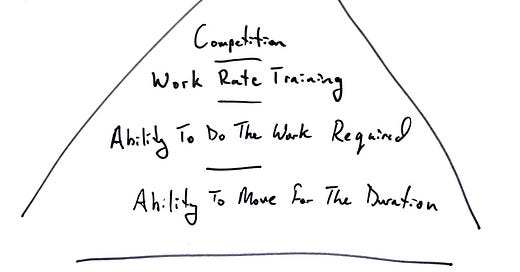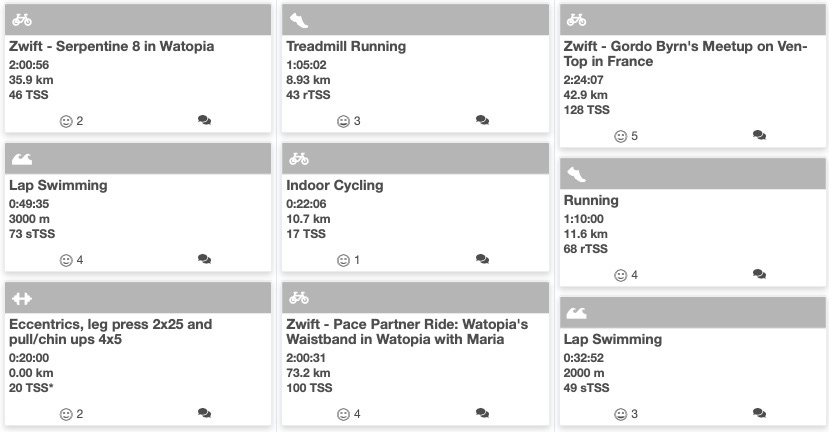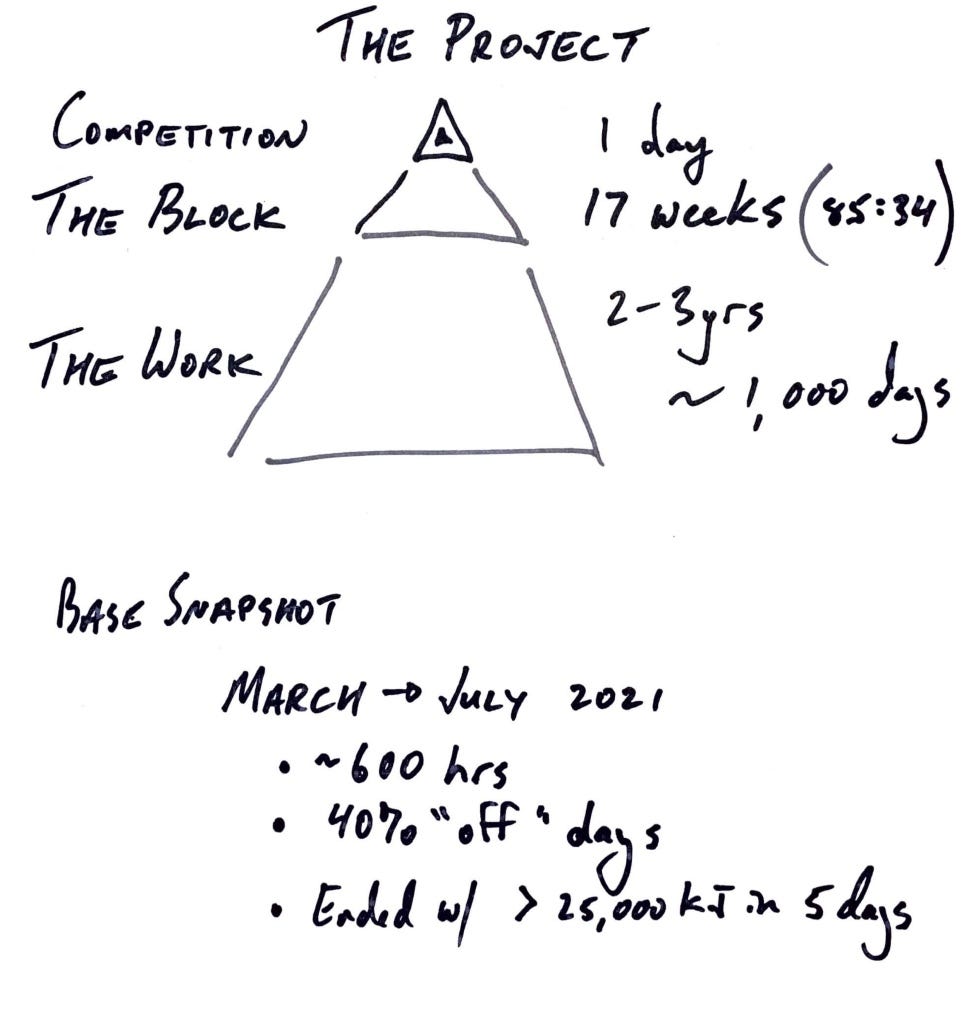Racing Fastest Using The Principle of Bottom-Up Endurance
Today, I am going to touch on a favorite topic.
Getting Tired The Right Way
"Right" meaning the way that directly benefits race performance, or builds the capacity to do the training required for race performance
Let's start at the beginning.
++
Ability To Move
You've signed up for a race. How long is it going to take you?
If it's a marathon then the average finish time is 4:29
Average Ironman? 12-14 hours
Have ever stood for the duration of your goal event?
Have you ever moved for the duration?
Based on last month, how many days does it take you to train the equivalent of your goal event?
Take your training time from last month
Convert to HH:MM per day
Compare it to race day
Consider The Gap between Average Daily Load and Likely Race Duration
The wider the gap, the lower your training intensity will need to be.
The initial focus: skills, strength and building the capacity to move.
Above is a long weekend from in November, ~10.5 hours of volume across three days.
If my race was 1-4 hours long then I'd be ticking the box on "ability to move".
If my race was 10+ hours long then I'd want to avoid all choices that result in less volume being done in my week.
When you are pushing duration, you will need to back off the pace.
++
How You Can Address The Gap
Extend by Compressing => patiently build the capacity to fit your event into fewer days.

Triathletes, look at total time (& distance) by sport. The multiple, or fraction, of race distance completed each week gives valuable insight into the humility you must display with race pacing.
Runners, your job is easier, look at weekly mileage and remember ALL mileage counts (walk, hike, run, you name it).
Everyone, judge your fitness by what happens after you load.
When you push duration, how long does it take you to return to normal training?
The depth of your fitness will be determined by your ability to back-it-up following your key endurance days.
Ability To Do Work
The weekend after the block (above), I did the equivalent of a Half Ironman (below)
These two days were not done at race pace.
Race Simulation workouts would have been too costly to my overall week. I would have needed too much recovery.
Step Two: after you have proven "Ability to Move" move on to "Ability to Do Work".
What I was seeking was placing the work-equivalent of my goal event into a single day, or 24-hour period.
My long "workout" is actually a series of workouts, intervals, meals... spread across a period of time.
Then I rest, do easy training, absorb and return to my normal training week.
Over time, my ability to do work will improve.
If it doesn't then I need to see what is preventing improvement (below).
How can we train the ability to do work?
No Hacks
No Short Cuts
No Easy Way
You gotta put in the hours.
Work Rate Training
Years later, it's time to think about the specific demands of your event.
Step Three is training to perform and that's a topic for another day.
The more time you give yourself to prepare, the faster you will be in your racing.
Back To Table of Contents
Linked Resources
Article: How To Target Endurance Training
Article: Dead Simple Nutrition







